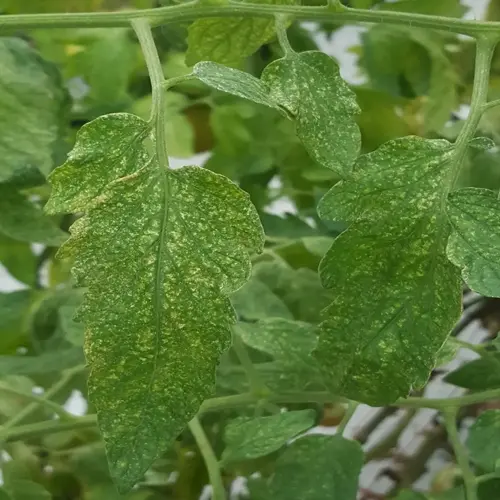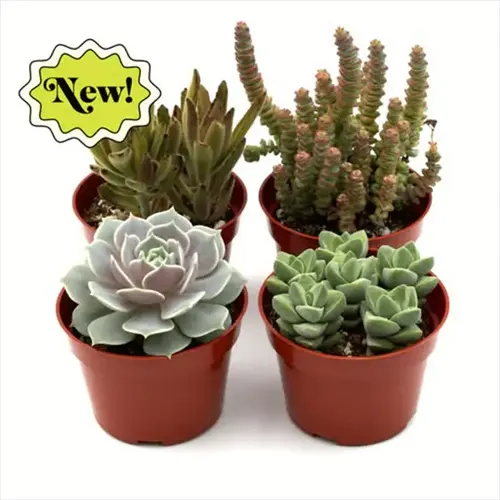10 Transformative Terrace Garden Ideas

Written by
Liu Xiaohui
Reviewed by
Prof. Samuel Fitzgerald, Ph.D.Explore terrace garden concepts for urban landscapes and small balconies
Use vertical gardens and collapsible furniture systems to make the most of constrained space
Use recycled containers and locally sourced community equipment to save money
Embrace sustainable practices such as harvesting rainwater and planting native plants
Choose climate-appropriate plants and durable materials to ensure success in all seasons
Dispel myths about rooftop gardening through science>driven solutions and alternatives
Article Navigation
Terrace garden ideas can be explored if you're looking to transform your elevated outdoor space into a lush retreat. Terrace gardens utilize containers or raised beds to create green spaces in urban settings. They turn empty spaces into beautiful and lively living areas.
Consider the added value that terrace gardens bring to your property, providing an air of refuge. Terrace gardens utilize limited spaces, such as balconies or rooftops. You will experience beauty and utility without giving up square footage.
In this guide, we will explore some useful terrace garden ideas for individuals with limited space. We will offer transformational designs, clever plant choices, and hands-on advice. You learn to incorporate sustainable features that will continue to perform well in all seasons.
Climate Adaptations
In hot climates, grow heat-loving plants such as agave or bougainvillea, which thrive in extreme heat over 100°F (38°C). In colder climates where the temperature drops below 20°F (-7°C), grow color and structure in ornamental kale and conifers in winter. Use only plants that are adapted to the extreme temperatures of the area. This will give you plants that thrive with assured life every month of the year.
Utilize mobile containers equipped with wheels to allow seasonal shifting of plants. Move citrus into sunlight for the warm spring days when temperatures hover at 50°F (10°C), then shelter with protection when temperatures turn colder. This mobility is efficient because it maximizes the use of limited space while protecting the more fragile species from the sudden impacts of the elements.
Installing adequate drainage layers in all planters is crucial to prevent root rot during heavy rains. Gravel bases and perforated pots allow for drainage of excess water while keeping the roots aerated. Good drainage will protect your investment during both the wet monsoon months and the freeze-thaw periods.
Incorporate drought-tolerant succulents and shade-loving ferns into multi-level planters, which create microclimates that buffer temperature changes. You'll save water while offering cooler pockets for plants when daytime temperatures exceed 90°F (32°C).
Hot Climates
- Shade Solutions: Install shade sails or retractable awnings to protect plants from intense sun exposure, reducing water needs by up to 40%. Use light-colored mulch to reflect heat and keep roots cool.
- Plant Selection: Choose drought-tolerant species like cacti, agave, or succulents that require minimal watering while providing vibrant textures and colors for visual interest.
Cold Regions
- Seasonal Flexibility: Utilize mobile containers that can be moved indoors during frost alerts. Cover sensitive plants with thermal blankets when temperatures drop below 50°F (10°C).
- Hardy Varieties: Incorporate evergreens like juniper and cold-resistant perennials such as hellebores that maintain structure and color during winter months.
Rainy Areas
- Drainage Systems: Create sloped surfaces with minimum 2% gradient and install French drains to prevent waterlogging. Use permeable pavers that allow 1-2 inches (25-50mm) of water absorption per hour.
- Moisture-Loving Plants: Select species like ferns, hostas, and astilbes that thrive in damp conditions while naturally resisting root rot in consistently wet environments.
Windy Coastal Areas
- Windbreaks: Install trellises with climbing plants like ivy or jasmine to create natural barriers against salt spray and strong winds that can damage foliage.
- Salt-Tolerant Species: Choose resilient plants such as sea thrift, lavender, or ornamental grasses that withstand coastal conditions while preventing soil erosion.
Arid Dry Zones
- Water Conservation: Implement ollas (unglazed clay pots) buried in soil that slowly release water directly to roots, reducing evaporation by up to 70%.
- Deep-Rooted Plants: Use native species like yucca or sagebrush with extensive root systems that access deep moisture reserves, requiring minimal supplemental watering.
Budget-Friendly Tips
Convert wooden crates or plastic crates into planters for free. I've converted thrown-away containers into herb gardens and saved $30 for each planter. Drill drainage holes spaced about 6 inches apart to prevent root rot and reuse pots that would otherwise head to the landfill.
Become part of seed swapping networks to get rare seeds without buying packets. Local groups of gardeners distribute climate-adapted seeds that have 30% better germination rates than store-bought seeds. Those groups also become networks of information between members, reducing the costs of pest control.
By investing in perennial plants (like lavender) that will last for 5 years or longer, throughout their lives, they will cost a bit more. Still, there will then be no annual $5 replacements. Then, by splitting mature perennial plants every few years, free specimens can be produced. They are also beneficial for pollinators.
These economical solutions create value in properties by delivering sustainable aesthetics. A thoughtful terrace garden enhances the property's visual appeal and demonstrates a resource-efficient approach. You cultivate personal sanctuaries that are financially viable in the long run.
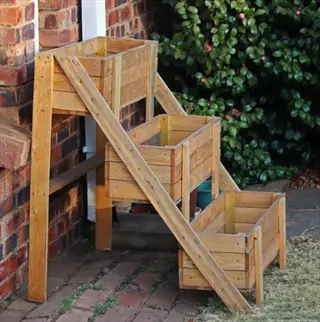
Upcycled Containers
- Cost: Repurpose discarded wooden crates or plastic bins at zero expense compared to $15-$30 commercial planters
- Durability: Seal wooden containers with non-toxic linseed oil to withstand 3-5 seasons of outdoor exposure without degradation
- Drainage: Drill ½-inch (12mm) holes spaced 6 inches (15cm) apart to prevent root rot while maintaining structural integrity
- Size Flexibility: Stack crates vertically for tiered herb gardens maximizing small spaces under 4 sq ft (0.37m²)
- Aesthetic: Paint exteriors with weather-resistant outdoor paint in coordinating colors to match terrace décor schemes
- Eco-Impact: Reduces landfill waste while creating unique planter designs unavailable in retail stores
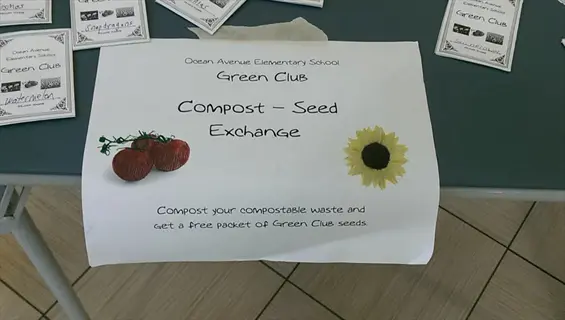
Seed Swapping
- Access: Join local gardening groups or online forums to trade heirloom varieties saving $2-$5 per seed packet
- Variety: Acquire rare cultivars like purple carrots or striped tomatoes unavailable in mainstream nurseries
- Success Rate: Swap seeds harvested from climate-adapted plants boasting 30% higher germination rates than commercial options
- Community: Build networks for ongoing advice exchange reducing pest/disease management costs by 40%
- Preservation: Contribute to conserving endangered plant species maintaining regional biodiversity
- Storage: Keep seeds viable for 2-3 years in airtight jars with silica gel packets in cool dark locations
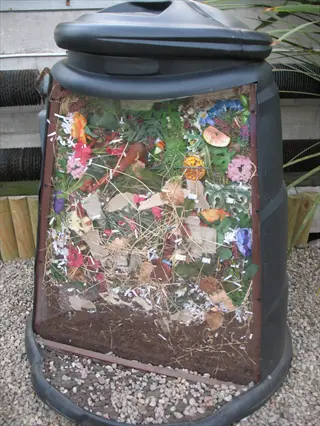
DIY Compost
- Materials: Convert 5-gallon (19L) buckets into compost systems using $5 drill bits compared to $40-$80 tumblers
- Layering: Alternate 4-inch (10cm) kitchen scraps with shredded newspaper to accelerate decomposition in 8-10 weeks
- Odor Control: Bury citrus peels beneath carbon layers to neutralize smells in compact terrace settings
- Yield: Produce 10 lbs (4.5kg) of nutrient-rich soil monthly from average household food waste
- Plant Boost: Increase vegetable yields by 25% compared to synthetic fertilizers costing $15-$30 per bag
- Maintenance: Turn piles weekly with handheld aerators ensuring consistent 130°F (54°C) decomposition temperatures

Perennial Investments
- Cost Analysis: $8-$12 perennial plants yield 5+ years of growth compared to annual $5 replacements totaling $25+
- Low-Maintenance: Drought-tolerant varieties like lavender require 60% less watering than seasonal flowers
- Propagation: Divide mature plants every 2-3 years creating 3-5 new specimens at no additional cost
- Pollinator Value: Attract bees/butterflies enhancing edible garden pollination without purchasing beneficial insects
- Design Cohesion: Establish consistent color schemes using repeating structural plants like ornamental grasses
- Winter Prep: Mulch with fallen leaves compared to commercial products for natural insulation below 20°F (-7°C)

Community Resources
- Tool Sharing: Borrow specialized equipment like soil testers from local libraries avoiding $50-$200 purchases
- Plant Rescues: Salvage discarded nursery plants during seasonal cleanups with 70% revival success rates
- Workshops: Attend free city-hosted sessions on terrace gardening techniques saving $25-$75 per class
- Soil Banks: Access municipal compost programs offering 20 lbs (9kg) free soil quarterly per household
- Rainwater: Install city-subsidized barrels collecting 50 gallons (189L) per storm reducing water bills by 30%
- Grants: Apply for urban greening funds covering up to $500 in terrace renovation materials
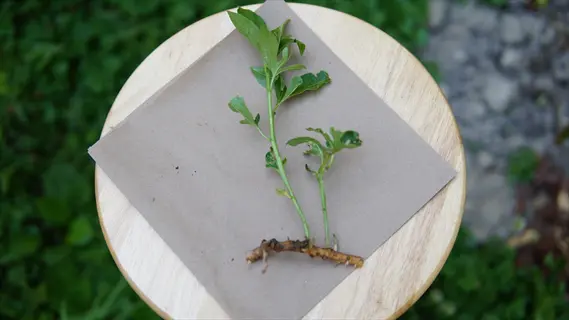
Propagation Techniques
- Cost Savings: Clone existing plants through stem cuttings instead of buying new $10-$25 specimens
- Success Rate: Achieve 80% rooting success using willow water as natural rooting hormone
- Timing: Take cuttings during active growth phases in spring/early summer for fastest results
- Equipment: Use recycled glass jars as humidity domes to create ideal microclimates
- Space Efficiency: Propagate multiple plants vertically using hanging test tube systems
- Variety Expansion: Trade rooted cuttings within community networks to diversify collections
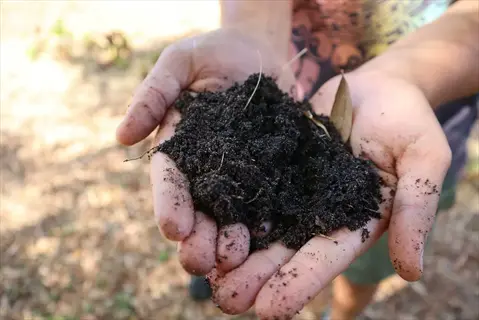
Mulching Alternatives
- Free Materials: Use fallen leaves, grass clippings, or shredded newspaper instead of $20-$40 bagged mulch
- Weed Suppression: Apply 3-inch (7.5cm) layers to block 90% of weed growth naturally
- Moisture Retention: Reduce watering frequency by 50% in summer months
- Soil Health: Decomposing materials add nutrients valued at $15-$25 per cubic yard annually
- Pest Control: Cedar or pine needle mulches deter slugs and snails without chemicals
- Winter Protection: Insulate plant roots during freezing temperatures below 32°F (0°C)
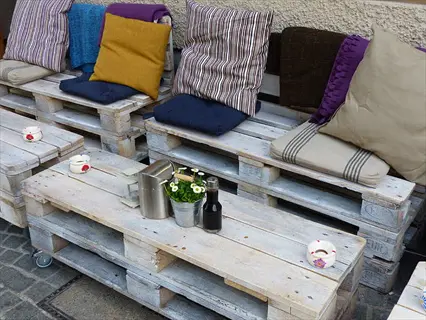
Pallet Furniture
- Material Cost: Repurpose discarded shipping pallets available free from local businesses
- Construction: Basic tools like saws and sanders transform pallets into sofas/tables in under 4 hours
- Customization: Stain or paint to match outdoor décor compared to $200+ retail sets
- Durability: Weatherproof with marine varnish for 3+ years of outdoor use
- Modularity: Reconfigure pieces seasonally for flexible terrace layouts
- Storage: Design vertical planters within pallet cavities for space efficiency

Rainwater Harvesting
- System Cost: Convert food-grade barrels into collectors for under $30 compared to $100+ commercial systems
- Water Savings: Collect 50 gallons (189L) per 1 inch (25mm) of rain on 100 sq ft (9m²) terrace
- Installation: Simple gutter diverter kits channel water without roof modifications
- Plant Benefits: Chlorine-free water improves soil microbiome health
- Maintenance: Clean filters monthly during growing season to prevent clogs
- Regulations: Check local codes allowing up to 100 gallons (378L) storage without permits
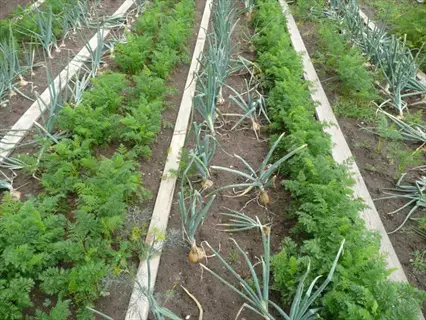
Natural Pest Control
- Cost Avoidance: Use marigolds or garlic instead of $15-$30 chemical sprays
- Companion Plants: Repel aphids with basil or deter beetles with nasturtiums
- Beneficial Insects: Attract ladybugs with dill plants to control aphid populations naturally
- DIY Sprays: Create neem oil solutions for under $5 compared to $20 commercial products
- Trap Crops: Plant sacrificial radishes to lure flea beetles away from main crops
- Monitoring: Inspect plants weekly during dawn/dusk when pests are most active
Sustainable Practices
Drip irrigation should be installed with adjustable emitters that are spaced 12-18 inches apart. This system utilizes 50% less water than sprinklers. During rainstorms, create a system of barrels for collecting rainwater. You significantly reduce the use of city water while caring for the plants during dry periods.
Rejuvenate soil with natural amendment strategies, especially a compost made from kitchen scraps. Add biochar, which absorbs and helps the soil retain water (20% guaranteed), and creates an environment conducive to natural vegetation free from chemical fertilizers: healthy soil, healthy roots, healthy food.
To help local wildlife, plant native species such as coneflowers and milkweed. They entice pollinators, use 60% less water than exotic species, and develop a natural resistance to pests, creating balanced ecosystems in your raised garden areas.
Opt for renewable materials such as bamboo or recycled plastic composites. Bamboo grows rapidly, absorbing more carbon than hardwood trees. Recycled materials will last outside for 5 seasons or more. Such options offer durability while minimizing environmental impact compared with traditional products.
Water Conservation
- Drip Irrigation: Install systems using 50% less water than sprinklers with adjustable emitters spaced 12-18 inches (30-45cm) apart
- Rainwater Harvesting: Collect 50 gallons (189L) per storm in repurposed barrels reducing municipal water use by 30% annually
- Olla Pots: Bury unglazed clay pots that slowly release water to roots cutting evaporation losses by 70%
Soil Regeneration
- Composting: Transform kitchen scraps into nutrient-rich soil adding nitrogen levels equivalent to $25 commercial fertilizers monthly
- Biochar Integration: Amend soil with charcoal improving water retention by 20% and sequestering carbon for 100+ years
- Cover Cropping: Plant clover or vetch during off-seasons fixing nitrogen at 2-4 lbs/1000 sq ft (1-2kg/93m²)
Native Planting
- Biodiversity Support: Choose region-specific plants like milkweed supporting 10x more pollinators than exotic species
- Low-Maintenance: Native species require 60% less watering adapting naturally to local rainfall patterns
- Pest Resistance: Indigenous plants develop natural defenses reducing need for chemical treatments by 45%
Renewable Materials
- Biodegradable Pots: Use coconut coir or rice husk containers decomposing in 6-12 months versus plastic lasting 500+ years
- Recycled Composites: Select furniture made from 90% post-consumer plastics enduring 5+ seasons outdoors
- Bamboo Structures: Install trellises growing 3 ft (1m) monthly absorbing 35% more CO₂ than hardwood
Energy Efficiency
- Solar Lighting: Power LED pathways with panels generating 200 lumens/watt using zero grid electricity
- Passive Cooling: Position deciduous trees shading west-facing walls reducing indoor temps by 10°F (5.5°C)
- Ventilation: Space plants for airflow minimizing mold risks without energy-consuming fans
10 Terrace Garden Ideas
Construct vertical gardens from stackable plant beds spaced 12 in. (30cm) apart. Use either treated lumber or metal grids that are rated for outdoor use. Transforming a wall into a lush display with a floor space requirement of under 4 sq ft. (0.37m²).
Mount foldable furniture with a wall-mounted set of tables that can be deployed in seconds. Consider powder-coated aluminum frames with weather-resistant fabric. These only take up 4 inches (10cm) of depth when collapsed, allowing for less space, withstanding temperatures from 20°F to 120°F (-7°C to 49°C).
Construct elevated cedar growing boxes measuring 24x48 inches (60x120 cm), with an 18-inch (45 cm) depth. Lining the bottom of the boxes with hardware cloth prevents pests while allowing for drainage. This long-lasting solution not only creates designated growing areas but also facilitates crop rotation.
Install recirculating water features using 50-gallon (189L) barrels fitted with submersible pumps. Including river stones allows wildlife to access water, but ensure GFCI outlets are accessible to prevent electric shock within 3 feet (1 meter). Moving water helps prevent stagnation and creates a calming sound.
Vertical Gardens
- Implementation: Install modular planters stacked vertically with 12-inch (30cm) spacing between tiers for climbing plants
- Materials: Use pressure-treated wood trellises or metal grids rated for outdoor conditions
- Plant Selection: Combine ivy for coverage and beans/herbs for edible yields in small spaces
- Space Optimization: Requires only 2x3 ft (0.6x0.9m) floor area while covering 8 ft (2.4m) height
- Maintenance: Water using drip irrigation with timer set to 15 minutes daily during summer
- Visual Impact: Create living walls that reduce ambient temperature by 5°F (3°C)
Foldable Furniture Systems
- Implementation: Mount wall-folding tables that deploy in 10 seconds with integrated seating
- Materials: Choose powder-coated aluminum frames and weatherproof fabric seating
- Space Saving: Collapses to 4-inch (10cm) depth when not in use
- Durability: Withstands temperatures from 20°F to 120°F (-7°C to 49°C)
- Accessories: Add wall-mounted ledges for condiments to free table space
- Layout Tip: Position near kitchen access for convenient outdoor dining
Stone Accent Features
- Implementation: Install Carrara marble tabletops on powder-coated steel bases
- Materials: Select 1.5-inch (38mm) thick marble with sealed surfaces
- Maintenance: Wipe with pH-neutral cleaner monthly to prevent staining
- Weather Resistance: Withstands freeze-thaw cycles down to -4°F (-20°C)
- Design Integration: Pair with matching stone planters for cohesive look
- Lighting: Add recessed LED strips beneath table for evening ambiance
Raised Bed Planters
- Implementation: Build cedar boxes 24x48 inches (60x120cm) with 18-inch (45cm) depth
- Soil: Fill with 60% topsoil, 30% compost, 10% perlite mixture
- Drainage: Install perforated PVC pipes at base to prevent waterlogging
- Crop Rotation: Divide into quadrants for seasonal vegetable rotation
- Accessibility: Include 12-inch (30cm) wide perimeter path for maintenance
- Pest Control: Line base with hardware cloth to deter burrowers
Water Features
- Implementation: Install recirculating fountain with 50-gallon (189L) reservoir
- Pump: Use 1200 GPH submersible pump with adjustable flow
- Maintenance: Clean filters monthly and use algaecide tablets quarterly
- Safety: Include GFCI outlet within 3 ft (1m) of water source
- Wildlife: Add river stones for bird perching and drinking
- Sound Design: Adjust waterfall height to 12 inches (30cm) for optimal white noise
Synthetic Turf Zones
- Installation: Lay ¾-inch (19mm) drainage base before turf installation
- Materials: Select UV-stabilized polyethylene turf with 2-inch (50mm) pile height
- Cooling: Choose lighter colors to reduce surface heat absorption
- Maintenance: Brush monthly against grain to maintain loft
- Durability: Rated for 8+ years of heavy foot traffic
- Integration: Border with cedar planter boxes for organic contrast
Bohemian Lounges
- Implementation: Arrange weather-resistant ottomans around low fire table
- Fabrics: Select solution-dyed acrylic fabrics fading less than 5% annually
- Storage: Include hidden compartments in seating for cushion protection
- Lighting: Hang Moroccan lanterns at 7 ft (2.1m) height
- Comfort: Layer outdoor rugs over sealed decking for warmth
- Modularity: Use triangular cushions that reconfigure for different layouts
Functional Zoning
- Implementation: Divide space with 36-inch (90cm) tall planter partitions
- Flooring: Use contrasting tiles to delineate dining/lounging areas
- Furniture: Select bistro sets for dining and chaise longues for relaxation
- Flow: Maintain 36-inch (90cm) wide pathways between zones
- Visual Unity: Repeat 2-3 plant species throughout zones
- Privacy: Add translucent screens between functional areas
Container Gardens
- Implementation: Group pots in odd numbers (3-5-7) for visual rhythm
- Materials: Use lightweight fiberglass pots for rooftop installations
- Drainage: Layer 2 inches (5cm) of gravel below soil
- Plant Pairing: Combine thriller (tall), filler (medium), spiller (trailing) plants
- Watering: Install self-watering reservoirs for 7-day autonomy
- Seasonal Rotation: Swap 50% of plants each season for fresh interest
Privacy Screens
- Implementation: Plant bamboo in 24-inch (60cm) wide planters spaced 6 ft (1.8m) apart
- Growth Control: Select clumping varieties increasing 3 ft (1m) annually
- Structure: Install steel cables between posts for vertical support
- Alternative: Use telescoping trellis systems with quick-growing vines
- Maintenance: Trim annually to maintain 8 ft (2.4m) height
- Light Filtering: Choose varieties with 30-40% leaf density for filtered shade
Choosing Plants & Materials
For beginners, choose easy-to-grow plants like basil and marigolds, which require minimal care. They withstand irregular waterings and will grow in any kind of pot available. For advanced gardeners, consider dwarf citrus trees, which require expert pruning and special feeding schedules. Select complexity that is appropriate to your experience level.
Make appropriate soil mixtures, made up of 60% coco coir, 30% perlite, and 10% vermicompost. This light mixture allows for good drainage and aeration for containers. Heavier garden soils compact easily, limiting the growth of roots.
Choose materials according to the durability of the season. Stainless and powder-coated steel withstand temperatures ranging from -4°F to 120°F (-20°C to 49°C). The natural oils in teakwood can help with moisture damage during freeze-thaw cycles. They will last longer than untreated substrates.
Consider using native alternatives appropriate for your climate zone. For cold climates, you could substitute a tropical hibiscus with a native coneflower that, like hibiscus, can withstand local temperature fluctuations and require little extra watering or pest management, whilst still providing habitat and food for pollinators.
Climate Adaptation
- Temperature Ranges: Choose plants surviving local extremes (e.g., -20°F/-29°C for Zone 4)
- Native Alternatives: Replace tropical hibiscus with hardy hibiscus in cold regions
- Microclimates: Utilize wind-protected corners for sensitive species
Maintenance Levels
- Water Needs: Group high-water plants near irrigation sources
- Pruning Frequency: Select slow-growing shrubs requiring annual vs. monthly trimming
- Soil Amendments: Incorporate time-release fertilizers for low-maintenance feeding
Space Optimization
- Vertical Growth: Choose columnar apple trees instead of spreading varieties for narrow spaces
- Container Sizing: Match root depth requirements (e.g., 12-inch/30cm depth for lettuce vs. 24-inch/60cm for tomatoes)
- Companion Planting: Pair basil with tomatoes to deter pests while sharing container space
Aesthetic Harmony
- Color Coordination: Select foliage with complementary hues (e.g., purple sage with yellow coreopsis)
- Texture Contrast: Combine feathery ferns with bold-leaved hostas for visual interest
- Seasonal Interest: Ensure year-round appeal with evergreen shrubs and winter-blooming hellebores
Seasonal Planning
- Succession Planting: Schedule cool-season kale followed by heat-loving peppers in same containers
- Frost Protection: Choose fabrics rated for temperatures down to 15°F (-9°C) for early spring planting
- Sun Exposure: Rotate pots seasonally to match changing light angles through the year
5 Common Myths
Terrace gardens are the cause of repeatedly leaking roofs and structural damage to buildings as time goes by.
@Terrace type gardens, properly installed and their plant roots and soil contained with waterproof and root proof membranes, protect roof covering systems against the decay brought about by ultraviolet radiation and thermal stress. Today's garden systems regularly feature drainage strata to remove 100% of the excess water, while light weight soil (less than 25 pounds per square foot when filled with water), assures no structural overload. Regular inspections and weight considerations help to maintain safely adequate to standard types of installations carried out on flat roof equipment.
A skilled gardener with experience can grow a successful terrace garden
Self-watering containers and automatic watering systems make it easy for novices to grow herbs, lettuce and succulent plants. Starter kits provide moisture detectors and plant identification applications that provide real-time care instructions. Community gardening programs allow individuals to have mentors, making terrace gardening available regardless of time available or previous shipping experience.
Terraces need to be large spaces to accommodate livelihoods of functional gardens with plant life and features
Gardening systems allow for an abundance of plant life to be displayed within 10 square feet of space, utilizing stackable hydroponic towers or plant gracing planters. Compact solutions will be foldable units or multi-layer planters of plants on small balconies. Four by (4 x 4) feet, can be included in the lives of such plants as; herbs of the culinary location both for the home or tin/can width of tomato plants, or a small water item(moving, reflecting, light feature) by planning the uses of space to plant and/or selection of unit(s).
Stone furniture and heavy materials cannot be used safely on elevated terrace structures.
The modern stone composites weigh 60% less than real stone, but offer the same aesthetics along with greater resistance to the weather than real stone. Engineered materials like the fiberglass reinforced planters distribute the weight uniformly over a large area resulting in compliance with the safety standards for roof load capacities. The professional installers calculate the precise amounts of weight distribution to assure that those building codes are met with the use of all the terrace amenities.
Water features inevitably attract mosquitoes and increase pest problems in terrace environments
Recirculating pumps with integrated filters prevent stagnation by moving water every 3-4 hours, eliminating mosquito breeding grounds. Adding Bacillus thuringiensis tablets monthly targets larvae without harming plants, while strategic placement near bird-attracting plants creates natural pest control. Properly maintained systems actually reduce pests by supporting predator insects like dragonflies.
Conclusion
Terrace gardens convert neglected areas into flourishing natural havens. Unused roofs or decks are turned into productive ecosystems when you supervise the conversion. The result is an indispensable outdoor living space without any increase in the area of extrinsic dwelling. Even small places become fruitful gardens.
The gardens offer significant benefits, including cleaner air and reduced urban heat island effects. You can cultivate wellness for yourself through gardening activities that help reduce stress. Property values go up about 15 percent with well-planned green areas. The environmental impact creates healthier living environments for communities.
Begin by engaging in simple container gardening. This may include growing a few herbs or salad greens in pots made from recycled materials. This form of gardening requires a minimal investment of time and money while teaching the most essential skills. Gradually add to the garden with more pot systems as confidence grows with the seasons.
Concentrate on long-term sustainability by using native plants and water conservation methods. Select species that are well-suited to your local rain and climate conditions. Construct rainwater barrels to reduce your reliance on municipal water. These methods will create shock-resistant gardens that will be less work to maintain in the long run.
External Sources
Frequently Asked Questions
How do I start a simple terrace garden?
Begin with container gardening using repurposed materials like wooden crates. Focus on easy-to-grow plants such as herbs and succulents that require minimal care. Ensure proper drainage and sunlight exposure for healthy growth.
What plants work best for rooftop conditions?
Opt for hardy, weather-resistant species like lavender, ornamental grasses, and dwarf citrus trees. These plants tolerate wind, sun exposure, and temperature fluctuations while requiring less water and maintenance.
How can I landscape affordably?
Use upcycled containers, join seed-swapping communities, and create DIY compost. Incorporate perennial plants that regrow annually, reducing replacement costs. Municipal soil banks and rainwater harvesting also cut expenses.
What are low-maintenance terrace garden solutions?
Install self-watering containers, use native drought-resistant plants, and apply mulch to reduce watering needs. Automated drip irrigation systems minimize daily upkeep while ensuring plant health.
- Self-watering containers with reservoirs
- Native species adapted to local climate
- Automated irrigation timers
- Mulch layers for moisture retention
How do I protect plants from wind?
Install trellises with climbing plants like ivy as natural windbreaks. Use sturdy containers, group plants for mutual protection, and select flexible-stemmed species that bend without breaking.
What soil mix is ideal for containers?
Combine lightweight materials like coco coir, perlite, and vermicompost. This blend ensures proper drainage, aeration, and nutrient retention while preventing soil compaction in planters.
How do I prevent rooftop leaks?
Install waterproof membranes and root barriers beneath planters. Ensure proper drainage slopes and use lightweight soils to avoid structural stress. Regular inspections maintain system integrity.
Which materials last longest outdoors?
Choose powder-coated steel, teak wood, or stone composites. These withstand temperature extremes, resist moisture damage, and maintain appearance for years without frequent replacement.
- Powder-coated steel frames
- Naturally oil-rich teak wood
- UV-stabilized synthetic fabrics
- Recycled plastic composites
How can small terraces feel luxurious?
Incorporate stone accents, modular furniture, and strategic lighting. Add water features for ambiance and use coordinated color schemes with textured plants for visual depth.
What sustainability practices matter most?
Implement rainwater harvesting, native planting, and composting. These conserve water, support local ecosystems, and recycle nutrients while reducing environmental impact.
